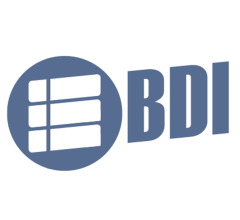
January 3, 2018 — Chagas disease (ChD), an infectious parasitic disease transmitted primarily by triatomine insects, has become a significant public health problem in recent decades. While many ChD patients suffer only minor symptoms, 20-30 percent develop chronic heart disease (ChHD); the variety of possible abnormalities caused by ChHD requires understanding of how different cardiac imaging modalities can assist in diagnosis and treatment decisions. A new document, Recommendations for Multimodality Cardiac Imaging in Patients with Chagas Disease: A Report from the American Society of Echocardiography in Collaboration With the InterAmerican Association of Echocardiography (ECOSIAC) and the Cardiovascular Imaging Department of the Brazilian Society of Cardiology (DIC-SBC), aims to provide the first comprehensive guidance for how best to use the multiple cardiac diagnostic tools to assess and monitor the growing number of patients with these Chagas-induced heart problems.
The document, a collaborative project between ASE, ECOSIAC and DIC-SBC, will appear in the January 2018 issue of the Journal of the American Society of Echocardiography (JASE). The writing group for this paper was led by Harry Acquatella, M.D., FACC, FAHA, FASE, MACP of Centro Medico de Caracas in Caracas, Venezuela (chair), one of the world’s foremost experts on Chagas heart disease, and Federico Asch, M.D., FASE of MedStar Washington Hospital Center in Washington, DC (co-chair).
Asch commented, “While historically it has been rare in the U.S., migration has changed the epidemiology of Chagas Heart Disease. However, there is still a lack of awareness in our medical community on how Chagas disease should be screened for and diagnosed, and how imaging could impact the outcome of these patients. This document brings together experts from Latin America, led by Dr. Acquatella, with U.S.-based clinicians to raise awareness of this not-so-rare-anymore cardiac disease and provide guidance on how different cardiac imaging modalities can impact the outcome of patients at risk or infected.”
The key recommendation of the paper is that patients living in, or migrated from areas at risk, who present with conduction abnormalities on an EKG, heart failure, abnormal left ventricular function or aneurysms, should be tested for Chagas disease and undergo special cardiac imaging procedures such as echocardiography or cardiac magnetic resonance to detect cardiac involvement. The document outlines in detail the features of electrocardiography and each cardiac imaging modality in relation to ChD, incorporating key technical aspects and recommendations for how and when to use each diagnostic tool during assessment of ChHD. It includes multiple figures and video clips to illustrate various concepts and types of pathology.
In conjunction with the publication of the guideline document, Asch will conduct a live webinar, including a question and answer section, on Feb. 8, 2018 at 1:00 p.m. Eastern Time. The webinar is available for free to all ASE members and open to all other clinicians for just $25; registration for the webinar is open now on ASEUniversity.org. This webinar, and all ASE-hosted guideline webinars, are available online to facilitate education for those who cannot attend the live webcast.
The full guideline document is available on the Journal of American Society of Echocardiography (JASE) website (OnlineJASE.com). This document and all ASE Guideline documents are also available to the medical community at ASEcho.org/Guidelines.
For more information: www.asecho.org
Content Related to Imaging For Infectious Disease:
Imaging Zika Virus - Radiologic Assessment and Tracking in Prenatal Development
VIDEO: Radiologic Assessment of Zika Virus


 December 04, 2025
December 04, 2025 









